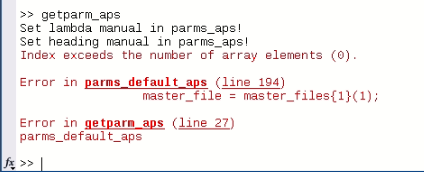It all depends on the type and magnitude of deformation and most importantly: what kind of surface changes do you want to measure and for which purpose?
I want to calculate the annual subsidence of this plain and examine its relationship with the amount of discharge from groundwater aquifers in the plain.
so is it possible that there was a rupture within your investigated period which caused the decorrelation?
I do not know. How do I know if there is a rupture or not?I am not familiar with the area.
I can’t tell you either.
DInSAR isn’t something which automatically reveals the ultimate truth. It is always an approximation of the deformations while potentially including phase contributions from atmosphere or processing artefacts. Without knowledge on your study area, there is little chance to generate a reliable result which can be validated. Unless you have local experts from this area among your contacts, I’m afraid are the only one who can tell if the observed patterns are plausible or not.
Your order is completely logical and correct. Thanks
Dear all ; @hexishan
I am trying to apply GACOS service to correct atmospheric artifacts on InSAR interferogram generated by snap2stamps.
I downloaded the GACOS_Ultility folder to test the proposed example. However, I found some troubles to adapt it to my InSAR data. Did anyone succeed to process the GACOS correction for their InSAR interefrograms?
Thank you.
Hi.
I have read that Atmospheric Correction for InSAR, It is useful for case studies where large geographical features and large surfaces such as mountains, volcanoes, etc. are presented.
So I have the doubt whether it is appropriate for all kinds of studies, I mean, does it make sense to apply it for example in a coastal city? with a small area of 10kmX10km.
The question is to what extent it makes sense to use this complement and in what areas of study if it would be a good option.
I found this review paper quite useful: Atmospheric effects on InSAR measurements and their mitigation
In many cases, it is obvious from the results if atmospheric correction is needed or not, either because the results show a weird and granular pattern or completely unrealistic results. However, the mitigation is easier for time series, compared to single image pair approaches.
Very small study areas have less spatial variation caused by atmospheric disturbance, but this does not necessarily mean that the results are not generally biased.
Some of you may recall this discussion from last year concerning possible atmospheric effects on the White Island volcano in New Zealand. Partly because of the interaction on this forum I was able to publish the study recently. The study received widespread media attention because of relevance to the deadly volcanic eruption in December 2019.
Now my study has received criticism for failure to consider properly atmospheric effects. The criticism came this week in the form of a response article published in the same journal. I am hoping an atmospheric effects expert here can read the just published criticism and give me an opinion on it. This could be very important if I am to write a response to defend my work. Perhaps someone here can recommend an atmospheric expert I could contact for an opinion? Thankyou!!
It would help to include links to your article and the response so people can read it 
Yes of course. Here are the links. If you don’t have access then please message me.
Thanks, Mark
Original article: https://www.sciencedirect.com/science/article/abs/pii/S0377027320301815
Critical response article: https://www.sciencedirect.com/science/article/abs/pii/S0377027321000639
thank you.
I’m not very experienced with atmospheric contributions to multi-temporal InSAR approaches, so I can’t comment on their arguments. Yet, as both authors are “locals” they might have studied this volcano a long time, so I can’t think of why they should mistrust your findings.Unless the deflation you showed was some kind of warning sign which should have been registered by the responsible persons before the incident, but I don’t want to speculate too much about this.
Hi everyone,
I’m trying to apply TRAIN on my project, with aps_linear option. I need to know if this could be a correct workflow on Matlab:
0 setparm to change some parms
1 command: stamps(1,6)
2 command: aps_linear
3 command: stamps(7,7)
4 command: stamps(6,6)
5 command: setparm(‘subtr_tropo’, ‘y’)
6 command: stamps(8,8)
7 command: ps_plot(‘v-dao’,‘a_linear’,‘ts’)
Thanks.
Almost.
If you plan to get only the v-dao, you are loosing time and resources by applying the stamps(8,8). So I suggest you not to run stamps(8,8) in this case. For the rest it seems fine to me.
The stamps(8,8) under the option -s (e.g. v-dos)
As final result for a PSI analysis, is it preferable export the PS.csv using ps_plot(‘v-dao’,‘a_linear’,‘ts’) or (after step 8) using ps_plot(‘v-dos’, ‘ts’)? Or what else do you recommend? Thanks @mdelgado
Update: I’m trying to plot ‘v-dos’ after the above workflow, but StaMPS give me the messagge: “Error using ps_plot (line 1540) unknown value type”. Why?
in the latest version they removed the option v-dos in favour of the v-dao
When I tried the linear filtering of Train, I got an error and couldn’t find parms_aps.mat. I would be very grateful if you could give me some ideas.
May I ask why we need calculate Step 6 (phase unwrapping) twice?
You type stamps(1,6) then afterwards there is stamps(6,6).
Thanks.